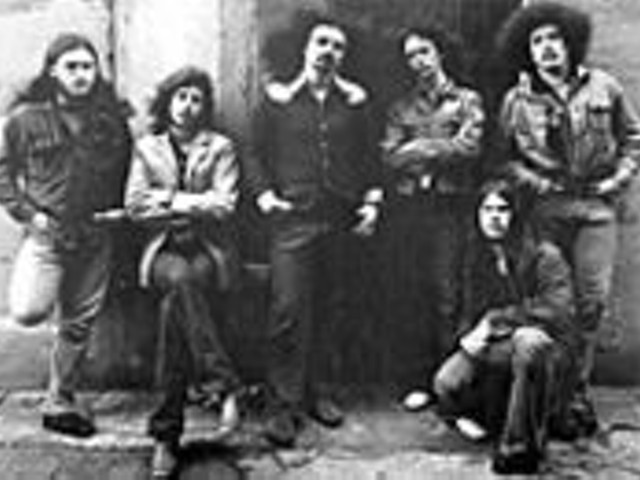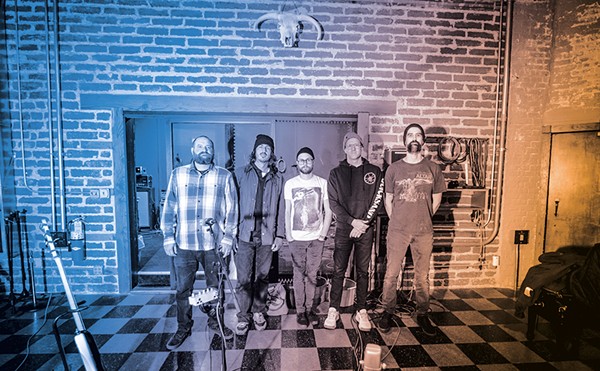This year offers plenty of arguments for not reading about music. Alanna Nash's laborious rehash, The Colonel: The Extraordinary Story of Colonel Tom Parker and Elvis Presley, confirms just what you thought: The Colonel was always evil and Elvis wasn't always pathetic. At 368 pages, Richie Unterberger's Eight Miles High: Folk-Rock's Flight From Haight-Ashbury to Woodstock wallows in Trivial Pursuit-level minutiae. And with Radiohead: Hysterical and Useless, Martin Clarke reveals that bios of rock stars are rarely hysterical and mostly useless.
A few books this year do illuminate the wonder and excitement of the music they discuss. Cecil Brown's Stagolee Shot Billy excavates an ever-reverberating American myth and Scott Saul's Freedom Is, Freedom Ain't: Jazz and the Making of the Sixties manages to be intellectually meaty and soulfully written. This year Continuum Books launched the 33 1/3 series: concise, provocative reconsiderations of classic albums including The Kinks' Village Green Preservation Society, Dusty Springfield's Dusty in Memphis and Neil Young's Harvest.
But when buying gifts for music lovers who love to read, you need writing that will knock their stockings off. You need Lester Bangs. With Main Lines, Blood Feasts, and Bad Taste: A Lester Bangs Reader, editor John Morthland has gathered a frenetic range of Bangs' writing, including classic dismemberments of Miles Davis, Dylan and the Beatles, some early memoirs of (what else?) boozing and writing and sex, and even some surprisingly lucid and honest (because stripped of all self-indulgent shock value) travel pieces.
In Jamaica in 1976, Bangs attends a Rasta religious gathering and finds himself focusing on the only woman present and glimpsing some kind of truth: "...she was beautiful, as yet unbrutalized at least to the eye, but as she stared vacantly into space all the herb in the world could not have been cosmetic for the utter desolation that, in her silence, in her stillness, was radiated by her very youth and beauty." Bangs was the first rock critic to see himself as a rock artist, writing the way Little Richard or Johnny Rotten sang. His best work reads like rock & roll feels.
Like Bangs, Nick Hornby believes that a personal reaction to music -- narcissism be damned -- is the only one that matters. His novel High Fidelity was music criticism masquerading as semi-autobiographical fiction; his collection Songbook (published last year in pricey hardback, but this year widely distributed by Riverhead Books in paperback) offers a kind of sequel. On the surface, Songbook seems like a slight, haphazard collection: 31 essays on 31 songs (appended with five new essays devoted to albums) that Hornby loves. The cheek, really.
But Songbook is a compelling, sometimes dazzling read, in part because Hornby risks moods mostly considered fatal in rock criticism: nostalgia, self-absorption, sentimentality, even romanticism (Bangs' great Satan). Music, for Hornby, expresses "something in us that's beyond the reach of words, something that eludes and defies our best attempts to spit it out." Whether writing about Santana's "Samba Pa Ti" or Aimee Mann's "I've Had It," Hornby gets as close to spitting out why music matters as mere words can.
Rankings and lists, of course, have nothing to do with why music matters. Still, music junkies, like sports freaks, need them to make sense out of their obsessions. Sometimes, as with Dave Marsh's classic tally of great rock singles, The Heart of Rock & Soul, an impassioned list can be a revelation. With Heartaches by the Number (published this year by Vanderbilt and the Country Music Foundation), David Cantwell and Bill Friskics-Warren follow Marsh's lead by ranking 500 country singles, an arguably more significant project, as country has always been (and remains) the most singles-fueled style in American music. The authors have ticked off more than a few readers with their inclusions and exclusions. Arguing with their choices may be half the fun of reading the book, but such debates are not, thankfully, all the writers have in mind.
Heartaches by the Number concerns itself with records, not just songs; in doing so, the authors re-imagine country music as more than the fertile turf of singers and songwriters (we all know that), but as a place where producers and arrangers, studios and musicians crafted sounds that were every bit as ambitious and thrilling as the most artful pop music. "Behind her," the authors write of Sammi Smith's delivery on "Help Me Make It Through the Night" (Smith's number-one single), "the strings play their old parts, but their notes tremble now, and, here and there, [Jerry] Carrigan's bass drum punches up the rhythm like he's trying to keep the whole thing from collapsing around them." Country music has rarely been written about with such devotion to sonic detail, with such an infectious enthusiasm for the music (not the personalities, not the business) itself. All books about music should offer such satisfying gifts.





